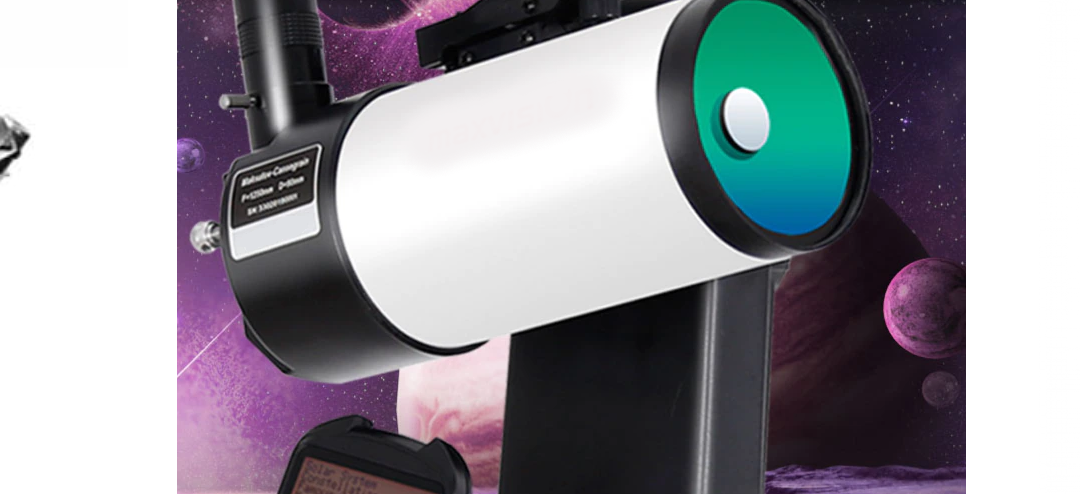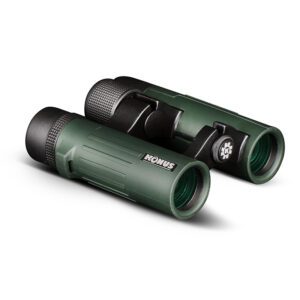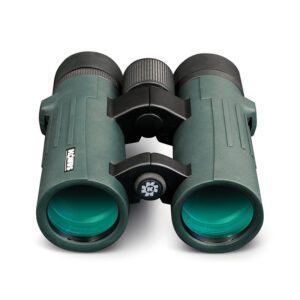Telescopes for Beginners – Main Types
by T.K | March 3rd, 2022 |
Welcome to this week’s article where we will look at the three main types of telescopes for beginners. Refractors, Reflectors, and Catadioptric telescopes. When most people think of a Telescope, they imagine a Refractor, like the one in the image, however there are others, and they all have their place for looking at the night sky.
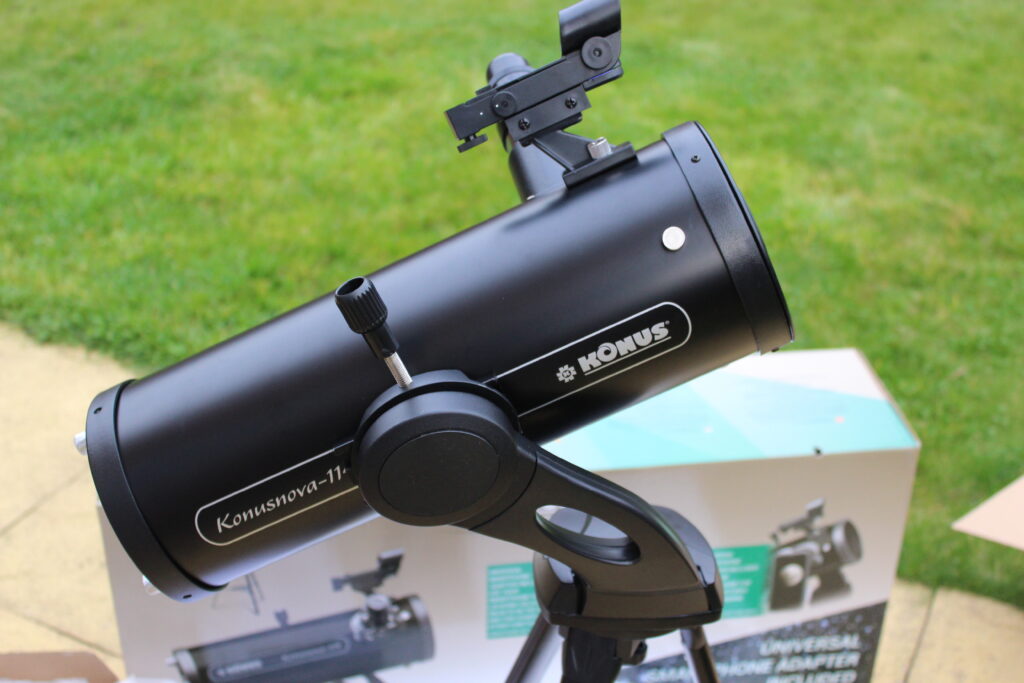
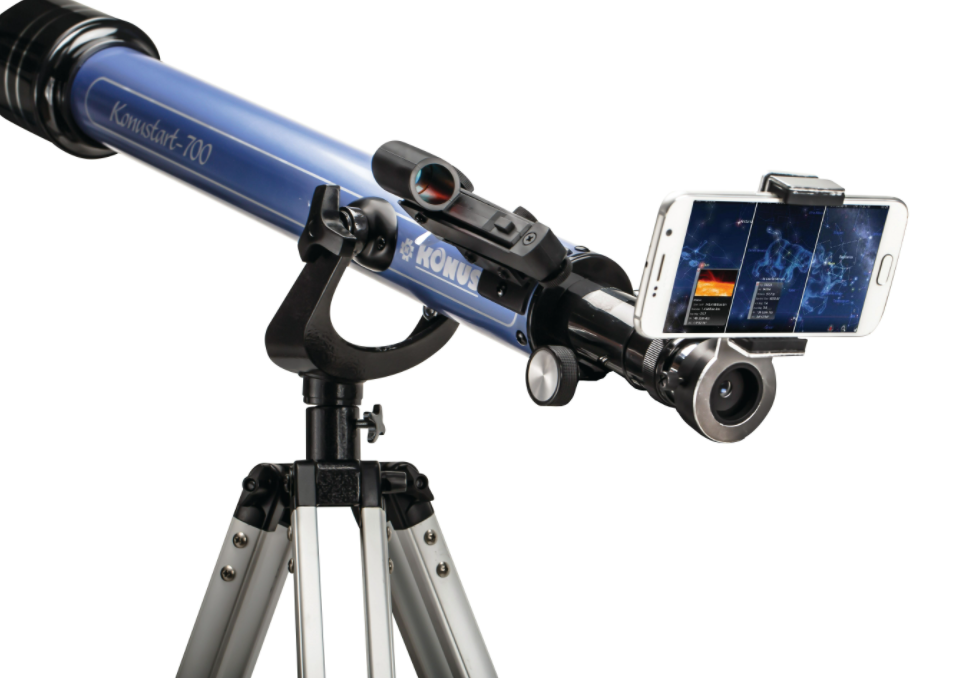
REFRACTOR
A Refractor has a large glass lens at one end, through which light passes and refracts or bends the light to a focal point. As the light passes the focal point, here, we place an eyepiece, which then focuses the light into a magnified image we can see. Usually, a Star Diagonal placed here to bounce the light 90 degrees for more comfortable viewing. A Refractor is a popular Telescope for Beginners.
REFLECTOR
A reflector, on the other hand, often called a Newtonian telescope. These can be mounted on Equatorial or Dobsonian mounts, and yes, this type of telescope was named after Isaac Newton, who first came up with this telescope concept. As the name implies, light reflects off a mirror. In this type of telescope, the mirror is usually placed at the bottom of a tube, the light is reflected up the tube towards a focal point the same as a Refractor but note where that happens near the top of the tube! That makes it hard to place an eyepiece there, as both the focuser and your head would block incoming light. So, a reflector uses a Secondary mirror, a small diagonally shaped flat mirror to bounce the light out the side of the tube (see image), this is where it enters the focuser and reaches the eyepiece.
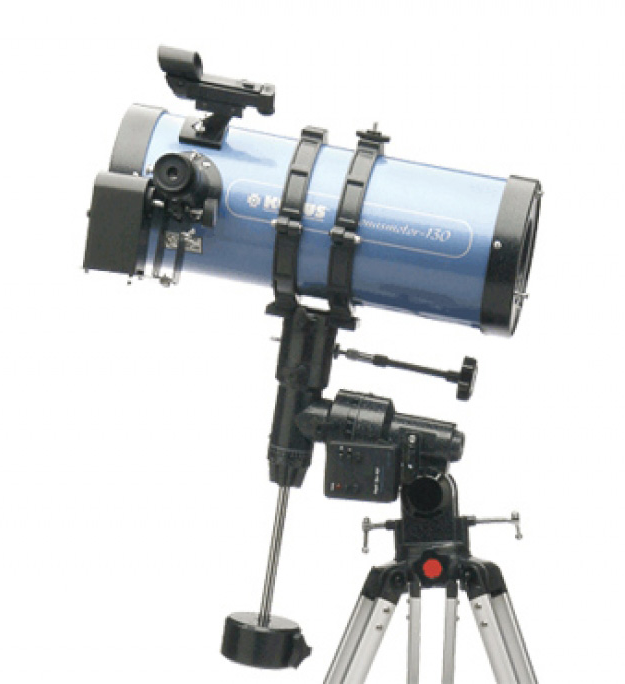
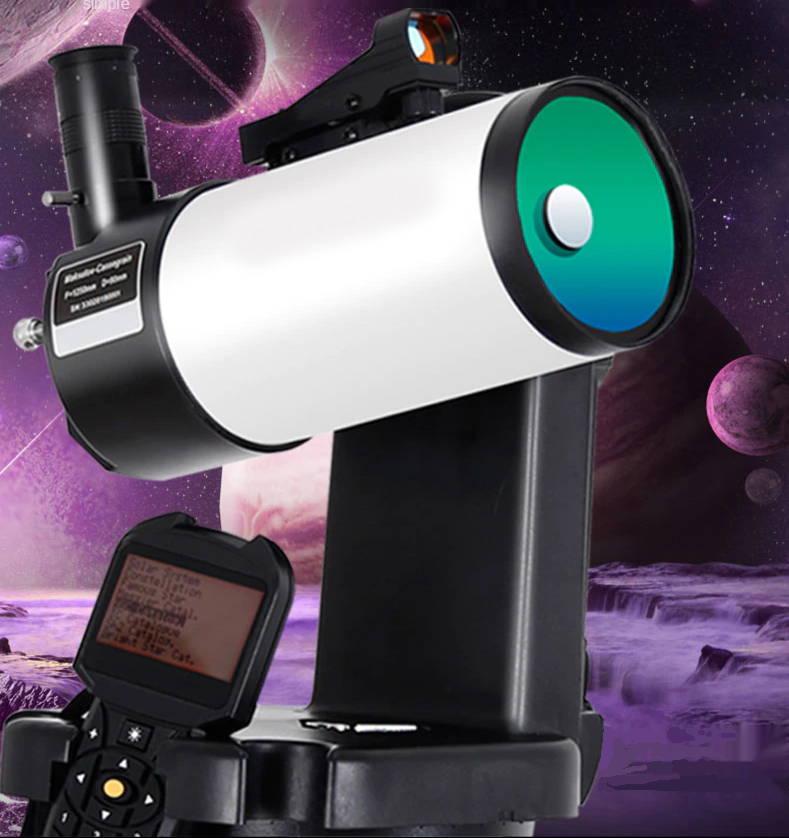
CATADIOPTRIC
The third type of telescope is a Catadioptric telescope. This does sound a bit technical I know, it’s a big word meaning, ‘an optical system that involves both the reflecting and refracting of light, in order to reduce aberration’ So this Schmidt-Cassegrain telescope (see image) for example, utilises a corrector lens on the front of the telescope, a strongly curved primary mirror at the back, and then another outwardly curved mirror in the middle of the corrector lens before light finally goes through the centre of the back of the telescope to the eyepiece. It can take a long focal-length light path (as light bounces back forth), and fold it into a shorter tube. There are other versions of catadioptric telescopes, Schmidt-Cassegrain and Maksutov-Cassegrains being the most prominent amateur types available.
STRENGTHS and WEAKNESSES
Let us take a quick overview of the strengths and weaknesses of each:
Refractor advantages:
- Unobstructed design and ease of manufacture allows for theoretically better optical quality.
- Eyepiece location is convenient in smaller models.
- Tend to be portable in apertures of 100 mm or less and are easy to aim.
Refractor Disadvantages:
- Chromatic Aberration in Achromats, where not all wave lengths of light focus is on the same place.
- Apochromatic designs, though overcoming Chromatic Aberration, are usually 3 to 5 times as expensive in longer focal lengths, the long tubes can sway in wind or on inexpensive mounts
- Larger models place the eyepiece uncomfortably low.
Reflector Advantages:
- No chromatic aberration
- Easier and less expensive to make in larger apertures
- Faster focal ratio systems provide wide fields of view
- Light grasp in larger models is excellent Cost per inch of aperture
Reflectors Disadvantages:
- The optical aberration “coma” occurs in faster models, unless specialised eyepieces or correctors used
- Light loss due to multiple mirrors is greater than refractor telescopes
- Central obstruction due to secondary mirror can cause diffraction and contrast loss
- Larger models can be bulky and heavy
- Eyepiece can be in awkward positions
Catadioptric Advantages:
- Reduced optical aberrations to minimal levels
- Provide good light gathering power
- Eyepiece in very convenient location
- Offer excellent portability
Catadioptric Disadvantages:
- The most expensive per inch of aperture
- Have the greatest light loss due to multiple lenses and mirrors
- Often have the largest central obstruction
- Tube currents due to sealed systems can cause poor images before fully cooled outdoors
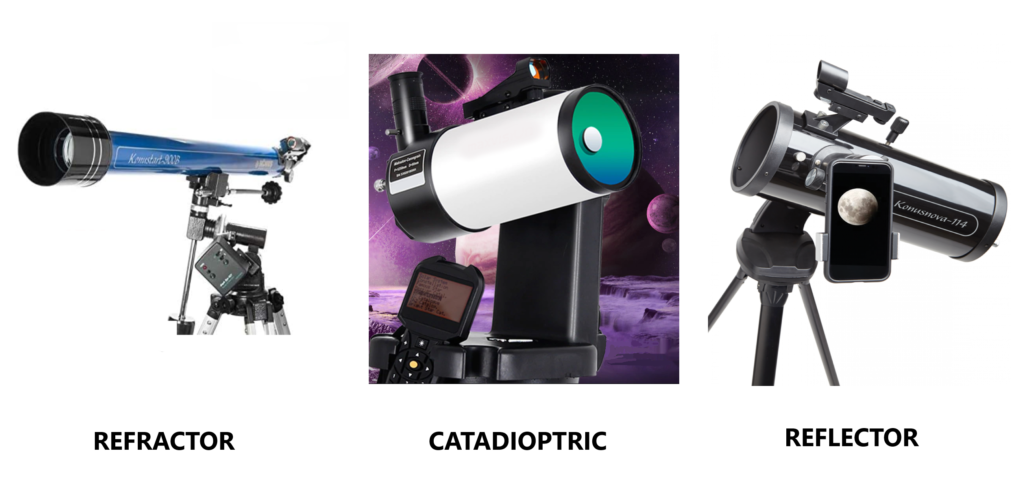
Telescopes for Beginners – Main Types
So that is a quick look at the three main types of telescopes for beginners, and some of their better features and downsides. If you are thinking about purchasing a telescope, please contact us via email or call us to discuss your requirements.
Thanks for reading our blog page, please come back to check on our latest news, articles and tutorials. See you soon!
We hope this explainer has helped you finding some interesting astronomy objects. Please come back soon to see our latest article in the UK Telescopes guide on how to use a telescope!
If you would like more information on interesting objects to observe in the night sky or advice about the best telescope to choose, please don’t hesitate to contact me on 01733 306 731 or send me an email tim@uk-telescopes.co.uk
Don’t forget to sign up to our NEWSLETTER!
